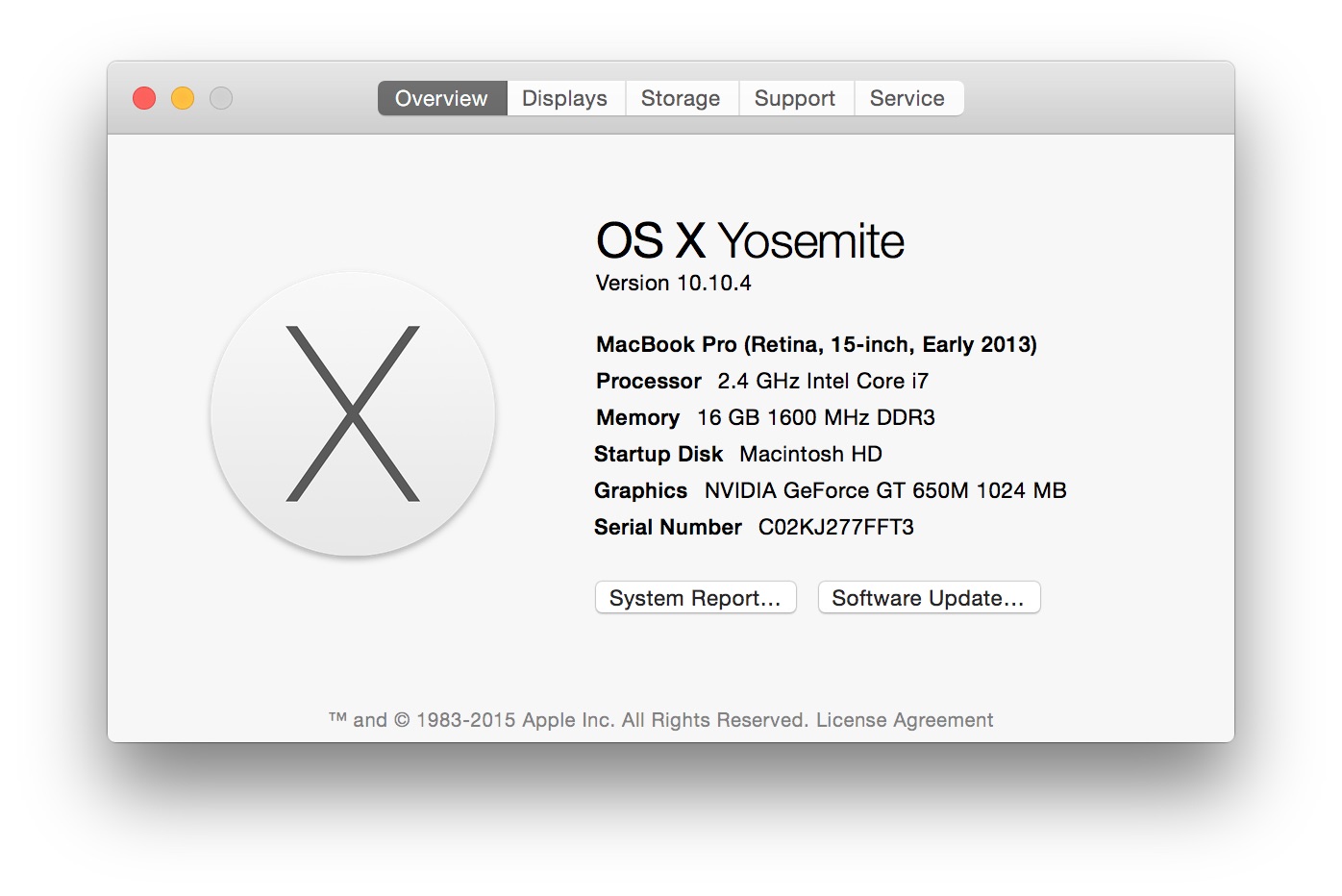- Intel-based Macintoshes are not supported. Selected older versions prior to 24.1 and after are available, but have known remotely exploitable security vulnerabilities, and you use them at your own risk. Please do not send support requests and reports by E-mail; due to the volume of mail received, not all requests can be answered or acknowledged.
- The single DVD works for all supported Macs (including 64-bit machines). New features include a new look, an updated Finder, Time Machine, Spaces, Boot Camp pre-installed, 206 full support for 64-bit applications (including graphical applications), new features in Mail and iChat, and a number of new security features.
- OS X Yosemite (/ j oʊ ˈ s ɛ m ɪ t i / yoh-SEM-it-ee; version 10.10) is the eleventh major release of macOS, Apple Inc.' S desktop and server operating system for Macintosh computers. OS X Yosemite was announced and released to developers on June 2, 2014, at WWDC 2014 and released to public beta testers on July 24, 2014.
OS X Yosemite Supported Systems. Specifically, the following Macs are compatible with OS X Yosemite, but did not ship with the operating system by default. However, just because a Mac runs OS X Yosemite does not mean that it is compatible with all features.
M1 chip-based Macs are NOT YET SUPPORTED
PLEASE READ BEFORE ATTEMPTING TO INTALL!
Note that the even though this Soundflower extension is signed, but the installer is not! You will have to hold the control key down to open the Soundflower.pkg installer for the first time.
Apple makes you jump through a few hoops. The first time you run the installer (Soundflower.pkg), it will ask for your admin password, and will FAIL! A security alert will appear, with a button to take you to System Preferences 'Security & Privacy - General' pane. Once there, there should be an 'Allow' button (**) that you will need to click on to give permission to use Soundflower (developer: MATT INGALLS). Then, RUN THE INSTALLER AGAIN. It should inform you installation was successful. If the 'Allow' button is disabled, you may need to click the lock icon in the bottom lower left corner first.
(**) If you see an 'Open Anyway' button in the Security Preferences, this is something different!!! Most likely because you tried (and failed) opening the installer by double clicking without holding down the control key. If so, click the 'Open Anyway' button which will display another window. Then click the 'Open' button in that window to launch the installer. Now you can follow the instructions above to get the 'Allow' button to appear in the Security Preferences.
NOTE: This is only the Soundflower kernel extension. The SoundflowerBed app is retired. A new replacement is in the works. In the meantime, you can take your chances with an older version of Soundflowerbed, but you can do a lot with a Multi-Output Aggregate Device. Here's an example:
Say i want to play some audio in iTunes, but record it in Quicktime while listening to it out of the built-in speakers. Here is how i would set it up:
*in iTunes:
start playing audio
Open Audio MIDI Setup: (found in /Applications/Utilities)
hit the '+' button in the bottom left corner and select 'Create Multi Output Device'
in the the panel that appears on the right, select 'Built-in Output' AND 'Soundflower (2ch)'
then hit the button with the gear icon bottom left and select 'use this device for sound output' (you should still be hearing your iTunes output -- it is now going to both Soundflower and the built-in speakers)
Then In Quicktime:
create a new audio recording
in the popup menu next to record button select 'Soundflower (2ch)' as the input
(you should now see record levels changing)
hit record!
Upgrade to macOS Big Sur
Before installing this upgrade, make sure that your Mac is ready.
Check compatibility
Latest mac os update for macbook pro. macOS Big Sur supports most Mac models introduced in 2013 and later.
View compatible Mac modelsMake a backup

Before you upgrade, make a complete backup with Time Machine, or store your files in iCloud.
 Learn how to back up your Mac
Learn how to back up your MacFree up space
If the installer needs more storage space to upgrade, you can free up space using tools that come with your Mac.
Free up storage spaceDownload macOS Big Sur
If you’re using macOS Mojave or later, choose Apple menu > System Preferences, then click Software Update. If you’re using an earlier macOS, use the App Store instead.
Learn how to download and install macOS Big SurGo to the App StoreYosemite Supported Macs App
Get to know macOS Big Sur
Yosemite Supported Macs Drive
Learn about some of the new features of macOS Big Sur.
Control Center

Control Center brings favorite controls such as Bluetooth, Wi-Fi, Do Not Disturb, and Sound together in a single place—so you can easily adjust them at any time.
Use Control CenterNotification Center
Notification Center puts notifications and>
Safari
Customize your start page, navigate with ease using the new tab bar, and access a new privacy report to see just how Safari protects your privacy as you browse.
Get to know SafariYosemite Supported Macs Os
Maps
Discover great places around the world and navigate easier with guides, cycling directions, indoor maps, Look Around, electric vehicle routing, and more.
Messages
Send messages to friends and family using new tools that make it easier to keep track of group conversations and give you fun, engaging ways to express yourself.
Use MessagesLearn more on YouTubePhotos
Use the expanded editing capabilities in Photos to easily make simple changes and more advanced adjustments to your photos.
Learn how to edit your photosHave a question?
Ask everyone. Our Apple Support Community can help you find answers.
Ask nowTell us how we can help
Answer a few questions and we'll help you find a solution.
Get support